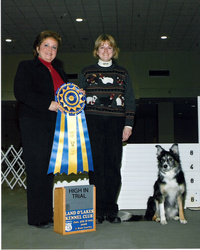Course Details
Many dogs start out their agility career with a good start line. But, over time that start line behavior deteriorates. Why do good start lines break down for some dogs and not others? How can some dogs have great start lines and other dogs struggle when you have trained the same way and handled the same way?
This class will help you build a start line behavior for your dog from the ground up. You will also add handling that is essential in maintaining that behavior throughout your dog's agility career. Agility trainers focus a lot on the training and handling involved to run sequences. Not enough time is spent training the skills needed for the start line and the routine before the dog starts running.
The content is suitable for young dogs that have not started trialing. It will can also help those dogs that have start line issues at the trials. For some dog and handler teams, the only change needed is a handling change. It is strongly suggested you refrain from trialing your dog while you work through this class.
Small dogs can also be trained to do long lead outs, in spite of what you see at the agility trials. Here is an example of my 19 month old Chihuahua mix who was trained with this method (like my big dogs) and has a lovely lead out.
Listen to previous podcasts about this class:
https://www.fenzidogsportsacademy.com/blog/e323-nancy-gagliardi-little-startlines-under-stress
Teaching Approach
This class takes a step by step approach to building the skills needed for a start line behavior. Each step will have written instructions. Most steps will have a corresponding video. Lectures are released in one batch at the beginning of the week.Feedback will be mainly written, but occasionally, voiceover videos help the student understand subtle changes that are difficult to describe.
This class will have a Teacher's Assistant (TA) available in the Facebook study group to help the Bronze and Silver students! Directions for joining that Facebook group will be in the classroom after you register.
 Instructor: Nancy Gagliardi Little
Instructor: Nancy Gagliardi LittleNancy Gagliardi Little (she/her) has been training dogs since the early 1980s, when she put an OTCH on her Novice A dog, a Labrador retriever. Since then she has put many advanced obedience titles on her dogs, including 4 AKC OTCH titles, 6 UD titles, 3 UDX titles, and multiple...(Click here for full bio and to view Nancy's upcoming courses)


